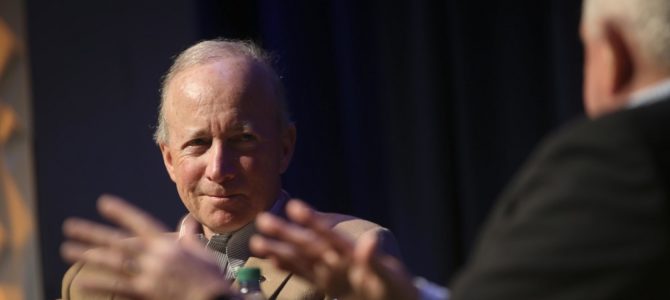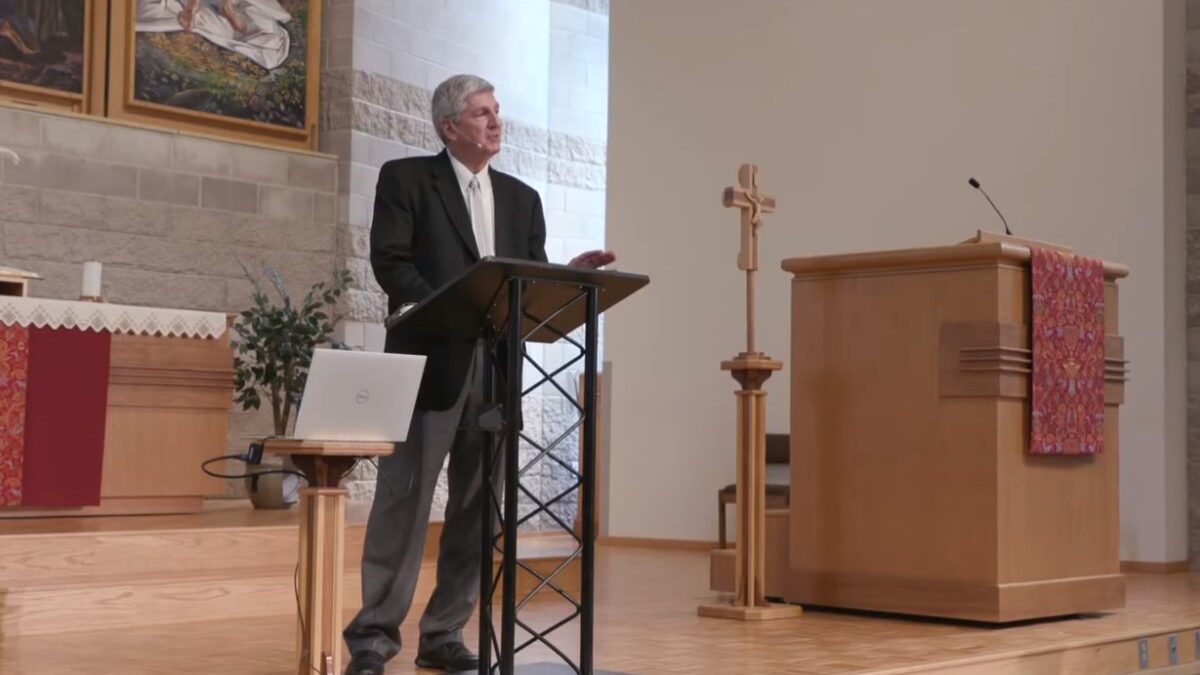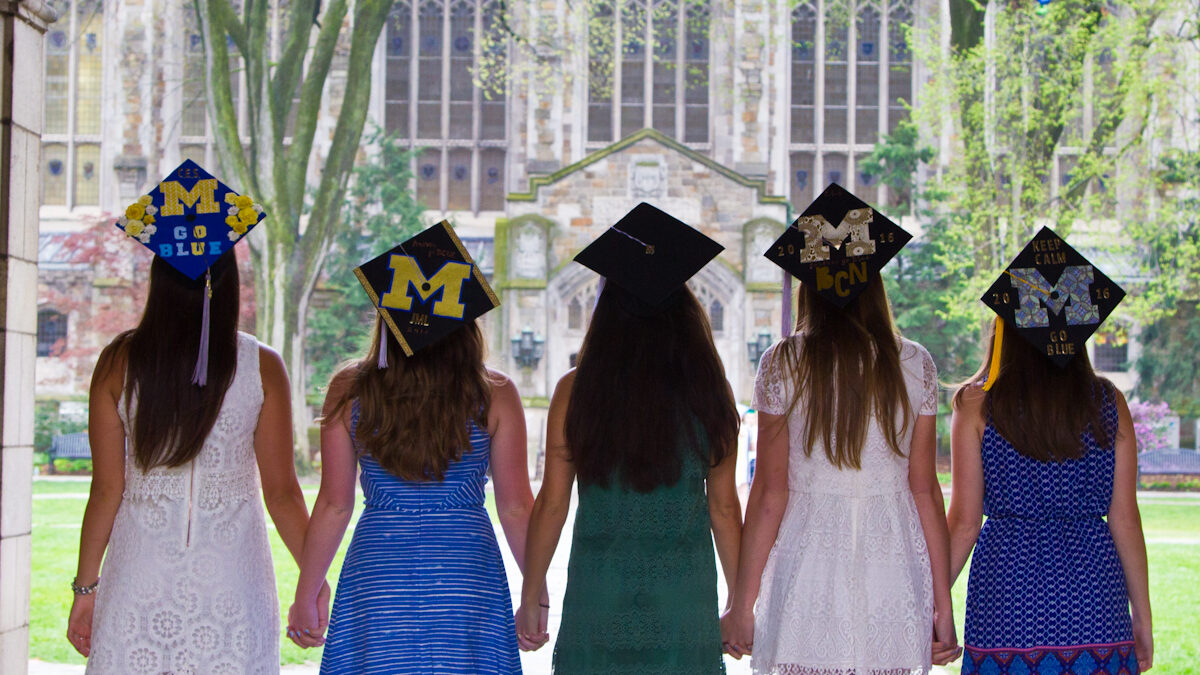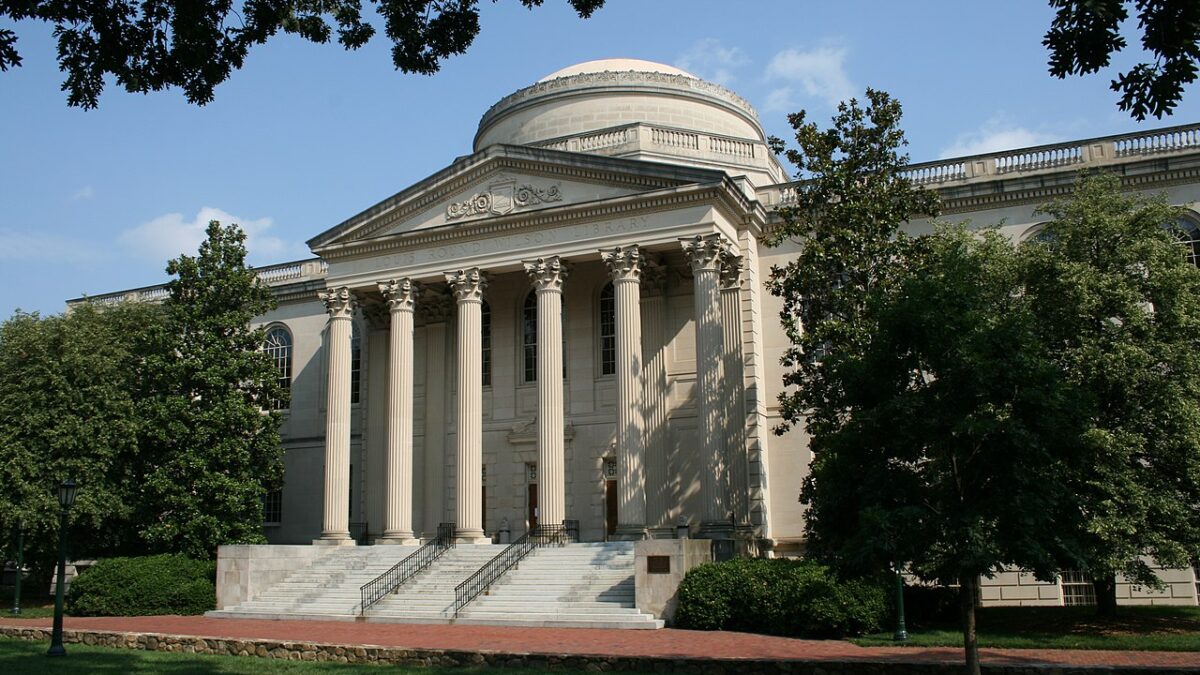
While other education leaders are waiting for politicians to release their students from the lockdowns suspending their futures, former Indiana governor Mitch Daniels, now head of Purdue University, is making plans to reopen his campus for fall.
“We have every intention of being on campus this fall,” he told the faculty senate on April 20, according to USA Today. “We are sober about the challenges that will bring. We believe in the value of the on-campus experience, and we’re determined, if we’re permitted to do so by the public authorities and medical circumstances. If at all possible, we intend to be open and operating.”
Daniels was appointed president of the highly ranked public research university in 2012 after a cost-cutting, no-nonsense governorship that sparked fruitless attempts to get him to run for president. As president of the Indiana university, he has frozen tuition, deployed innovative online programs, and increased enrollment by about 6,000 students to nearly 45,000. During that timeframe, college enrollment nationwide declined 11 percent.
On April 21, Daniels issued a public letter detailing the university’s initial plans for reopening campus after Indiana Gov. Eric Holcomb in March banned in-person education due to coronavirus fright.
“Closing down our entire society, including our university, was a correct and necessary step,” Daniels wrote, diplomatically. “It has had invaluable results. But like any action so drastic, it has come at extraordinary costs, as much human as economic, and at some point, clearly before next fall, those will begin to vastly outweigh the benefits of its continuance.”
Daniels noted the serious costs to students of degrading their education through the international stampede into online coursework. These include “Interrupting and postponing the education of tomorrow’s leaders,” “permanently damaging the careers and lives of those who have made teaching and research their life’s work, and those who support them in that endeavor,” and damaging learning, since “all the evidence reveals that students who live and spend more of their time on campus succeed academically at higher rates.”
Daniels acknowledged that about 20 percent of the Purdue community is at higher risk from coronavirus due to age or pre-existing conditions. He said he is serious about keeping them and lower-risk student and faculty safe while not sacrificing the other 80 percent of students’ futures.
“At least 80% of our population is made up of young people, say, 35 and under. All data to date tell us that the COVID-19 virus, while it transmits rapidly in this age group, poses close to zero lethal threat to them,” he wrote. Studies have found that, primarily because of these factors, school shutdowns are one of the least effective ways to “flatten the curve.” In fact, shutting down schools likely puts the elderly and sick at greater risk of death because it delays the herd immunity from healthier people necessary to protect them.
So reopening Purdue could be a way to make it safer — if state and federal officials allow. Daniels suggested some “preliminary” safety steps the campus is considering in order to open in the fall while protecting all students and staff. These include, as summarized by USA Today:
- Spreading out classes across days and times to reduce their size;
- More online instruction for on-campus students;
- Allowing – or requiring – people more at risk to the virus to work remotely;
- Pre-testing students and staff for infection and post-infection immunity and using the Purdue laboratory to ensure fast results;
- Tracing contacts for those who test positive and asking contacts to self-quarantine for 14 days.
“[T[hese concepts are preliminary, intended mainly to illustrate an overall, data-driven and research-based strategy, and to invite suggestions for their modification or exclusion in favor of better actions,” Daniels wrote. “They will be augmented by a host of other changes, such as an indefinite prohibition on gatherings above a specified size, continued limitations on visitors to and travel away from campus, required use of face coverings and other protective equipment, frequent if not daily deep cleaning of facilities, and so forth.”
This is what leadership looks like, and it will make Purdue even stronger long-term. Students at all levels and their parents have been forced into emotionally destabilizing holding patterns over their futures, and Daniels is providing them a place to safely land. Providing stability is crucial for parent and students’ trust in his university, which is key in a down market for higher education.
He’s making Purdue the place to be for smart students who want as few education disruptions as possible and will select his high-quality university, instead of their competing options, to get it. This will attract smart kids who are comfortable facing controlled risk — precisely the kind of graduates who will go on to make Purdue proud and burnish its reputation in the years to come.
As Daniels wrote, teaching the world and especially the young people under his leadership what it means to be a Boilermaker, “a return-to-operations strategy is undergirded by a fundamental conviction that even a phenomenon as menacing as COVID-19 is one of the inevitable risks of life.”
Higher education, like much of American elite institutions, was already rotting before the Wuhan virus arrived. Before the shutdowns, college enrollment had already dropped 11 percent, and not due to fewer available young people, but to doubts about academia’s true value that Covid-19 only exacerbates.
The wake of our coronavirus panic is likely to erase countless institutions in the long-term, regardless of whether Congress prints them stacks of cash like it is every other interest under the sun. Purdue was already less likely to be one of these lost universities, given its strength going into the crisis, and Daniels’ clear, bold, and anxiety-assuaging leadership during this crisis is keeping it that way.
It’s an absolute win for Purdue to present itself in uncertain times as the strong horse for smart and gutsy young Americans.









